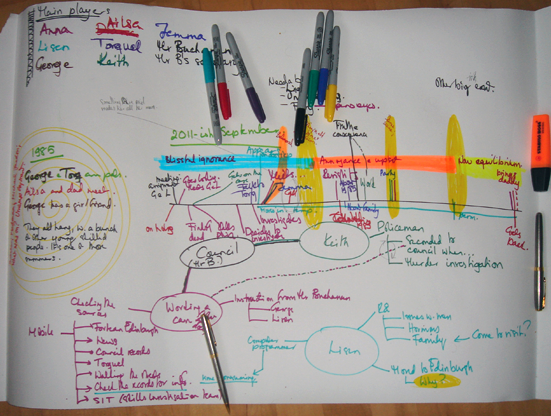To write a story, you need a plot. The longer the story, the more detail you need. This I have learned. I’m a somewhat seat-of-my-pants writer but am beginning to like to know where I’m going. And if I’m going a long distance – say, 100,000 words, for example – I want to have a good idea of the route. I’d get lost otherwise, I’d go nowhere, or in circles, boring my readers and myself. Since I’ve worked with this set of characters before, I know how I want them to change over the course of the book. So that’s great: character arcs are in place. The plot is another issue. I don’t have one. Or rather, I don’t have much of one. (This is what I’ve got: a chap dies and is found by our heroine. She’s put out.)
I’ve started working on the plot in a very similar way to the method I used for NaNoWriMo last year. This time I’m using a bigger piece of paper and many more coloured pens. It doesn’t look very structured and that’s OK. It isn’t. At the moment I’m at the brain-dump stage. I’ve put what little I know on a piece of paper, set out a time line and started putting in the few plot elements or scenes that I have. Hopefully, holes will become apparent and patterns will emerge. Then I can do research and generate ideas where the plot is weak. Finally, I’ll have a map. Then the writing starts.
